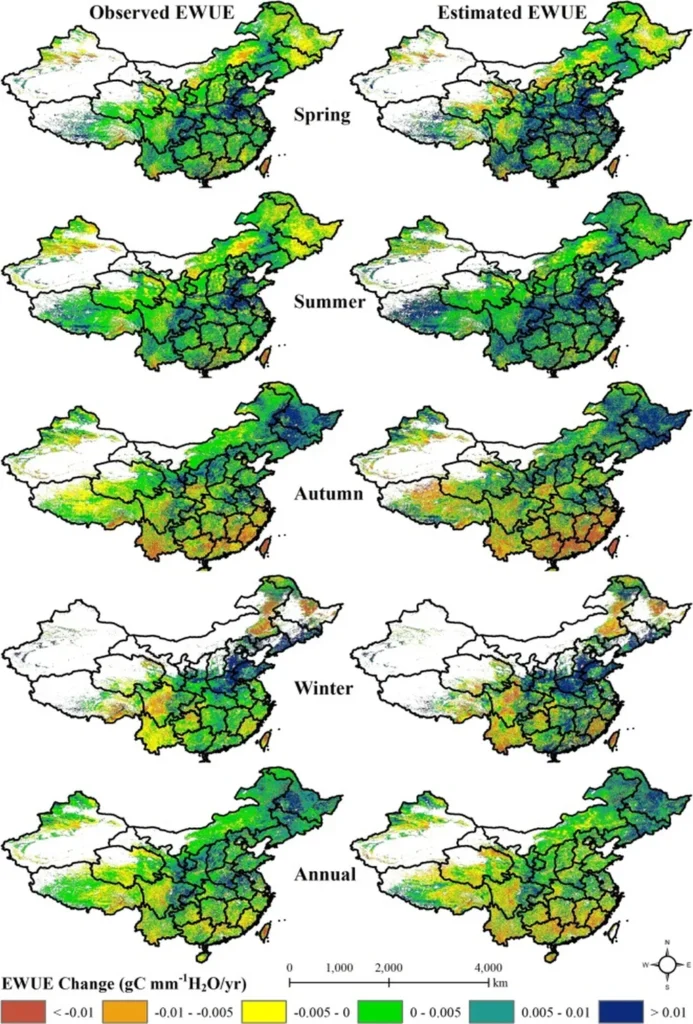In the heart of China’s agricultural and industrial landscape, the Haihe River Basin (HRB) has been undergoing a significant ecological transformation over the past two decades. While the region has seen a notable increase in vegetation, a recent study published in *Remote Sensing* reveals a troubling trend: this greening is coming at a hydrological cost. The research, led by Fang Xu from the School of Landscape Architecture at Beijing Forestry University, leverages multi-source satellite data to shed light on the complex interplay between carbon uptake and water use in this vital basin.
The study, which analyzed data from 2001 to 2023, found that while Gross Primary Production (GPP) in the HRB increased significantly, the basin-wide Water Use Efficiency (WUE) declined. This “decoupling” of carbon and water trends suggests that the region’s ecological restoration efforts, while successful in boosting vegetation, may not be sustainable in the long term.
“Despite the increase in greening, we observed a decline in water use efficiency,” Xu explained. “This indicates that the vegetation is using more water to achieve the same or even less carbon uptake, which is a concerning trend for a water-scarce region like the HRB.”
The study’s findings have significant implications for the agriculture sector, which relies heavily on the HRB’s water resources. As the region’s water use efficiency declines, farmers may face increased competition for this vital resource. Moreover, the study’s attribution analysis identified climate change, particularly rising temperatures and increased vapor pressure deficit, as the dominant drivers of this decline. This underscores the urgent need for climate-smart agricultural practices that can adapt to these changing conditions.
The research also highlights the need for a shift in ecological restoration policies. Rather than focusing solely on increasing vegetation cover, policymakers should prioritize “sustainable and hydrologically sound greening,” as Xu put it. This could involve promoting drought-resistant plant species, implementing more efficient irrigation practices, and integrating water management strategies into ecological restoration plans.
The study’s findings are a stark reminder of the complex and often unintended consequences of ecological restoration efforts. As the world grapples with the dual challenges of climate change and biodiversity loss, this research underscores the need for a more nuanced and holistic approach to environmental management.
The study’s use of satellite remote sensing data offers a powerful tool for monitoring and assessing the impacts of ecological restoration efforts. As this technology continues to advance, it is likely to play an increasingly important role in shaping future developments in the field. By providing real-time, large-scale data on vegetation dynamics and water use, remote sensing can help inform more effective and sustainable ecological restoration strategies.
In conclusion, this research serves as a timely reminder of the need for hydrologically informed policies in ecological restoration. As the world continues to grapple with the impacts of climate change, the findings of this study offer valuable insights into the complex interplay between carbon and water dynamics in a changing world.

